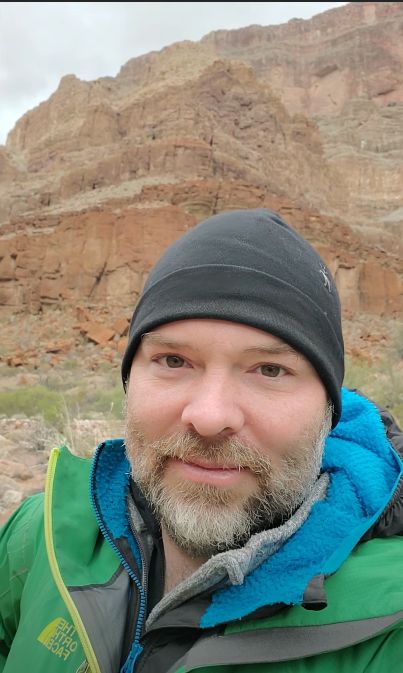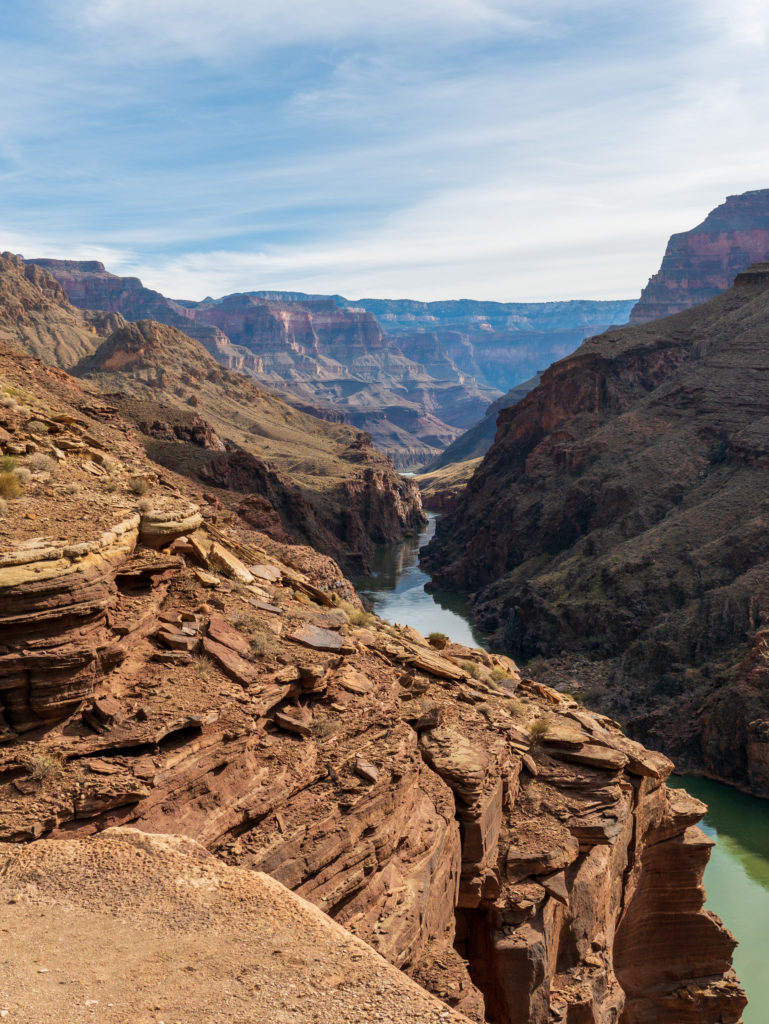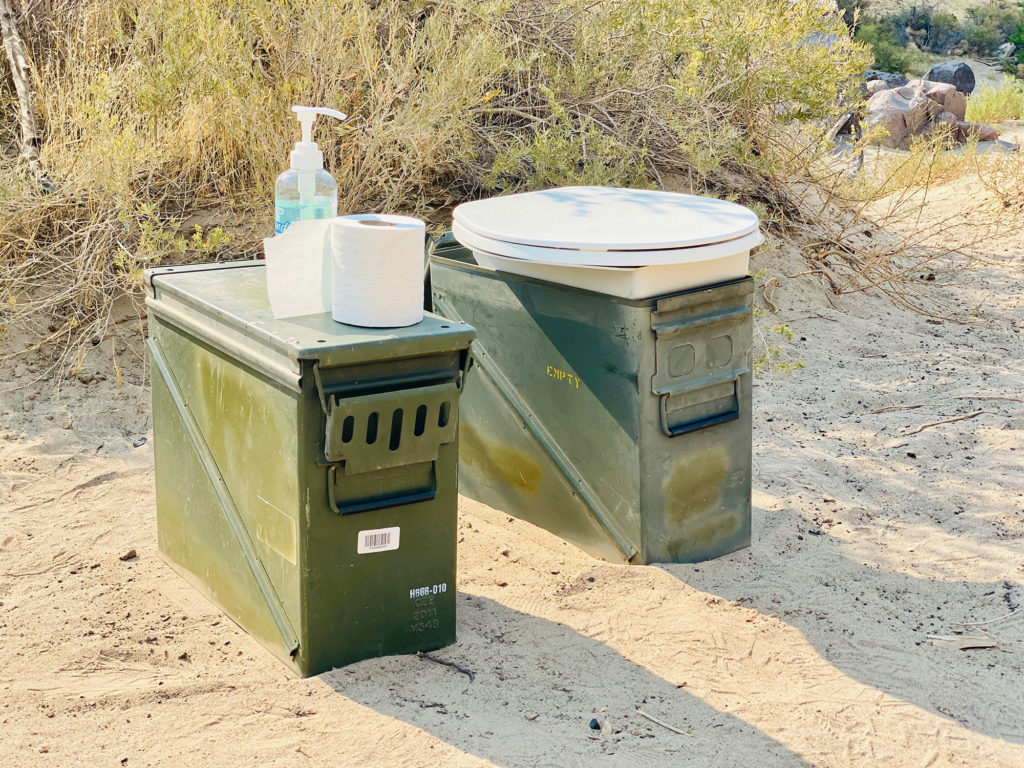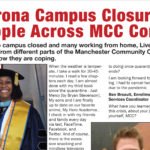Trip of a Lifetime
Trip of a Lifetime Rafting through Grand Canyon Features Highs and Lows
While many people were doing last minute Christmas shopping and cooking holiday feasts, a Manchester Community College professor was hiking in the Grand Canyon and braving whitewater rapids.
Brion van Over, who teaches Communication at MCC, joined a group of friends and other adventurers for the 16-day trip, which covered more than 130 miles of Arizona in late December.
The journey had many pleasures and perils. At one point, heavy rapids in the river caused van Over to take an unexpected dip.
“We were in this Class V rapid, and we got hit by this wave that came in from the side, and it ricocheted off the canyon wall, and came back and nailed us. We were not prepared for it,” van Over said, adding that the largest rafts were about 18 feet long and weighed almost 2,000 pounds.
The raft then tipped 90 degrees, as people fell off from above van Over. He realized that his weight was pulling the raft down, so he let go, falling into the water, which allowed the raft to correct itself. Luckily, van Over was wearing a dry suit, a waterproof one-piece with rubberized closures around the wrists and neck that seal out water, over his clothes.
This experience is offered by the National Park Service and only to those who sign up for and win a lottery on its website, said van Over. The trip can span up to 18 days for a commercial trip, or up to 25 days for a private trip. van Over’s group went on the full 25-day trip, but he joined them part-way through. He started his trip on Dec. 16 and ended on January 1. Camping, rappelling, and exploring are all things that can be expected on a trip like this.
It was a once in a lifetime experience, said van Over, and others who have done it feel the same.
“There’s not really any other context that I have found out in the world where you can bond that intimately and that intensely with people in such a short period of time, where they really start to feel like family out there,” van Over said, adding that there were people with his group who have gone multiple times. One man, who was on his fifth trip, told him that he doesn’t go for the rapids, but because of the relationships that are built along the way.
A native of New York City, van Over said that he has always been interested in whitewater rafting. Growing up, there weren’t many opportunities to spend time outdoors and so he has always been looking for extreme and adventurous tasks, and whitewater rafting has always been something he’s enjoyed when given the chance. He decided to do this because every time he’s gone whitewater rafting, the trips have been regulated and safe, and to him, part of the adventure is that this trip is not entirely safe, but real. The only contact source is from a device called an in-reach which allows users to call emergency services via satellite.
When he wasn’t rafting, he was exploring the shores of the river, van Over said.
“You can find these really old archeological elements all over the place. From pottery remains to actual rocks with old crinoid remains. You can just go explore the rocks in any of the riverbeds and find stuff that’s like hundreds of millions of years old,” van Over said.
The remains cannot be disturbed, but the crinoid fossils, which are the fossilized remains of crinoid animals that lived hundreds of millions of years ago, were a most prized find.
“The most amazing part of the trip was being at a layer so deep and so inaccessible that you can see a representation of how old the Earth is,” van Over said.
At the beginning of the trip, participants must watch a short video detailing appropriate behavior along the path. This trail exists within the Havasupai Indian Reservation, so people are not allowed to take or leave anything along the trip, which includes human waste.
“You pack out all of the human waste that you produce,” van Over said. “These metal containers that are actually just large munitions containers, the metal bullet containers, you use those. You just pop a toilet seat on top of those and… as you fill each one up you lock it up and put it in the back of a boat.”
Known as a “groover” the shared containers are a kind of portable toilet used for camping in the wilderness. It’s not all deprivation, van Over said. Giant coolers hold the food, which ranged from granola bars and pasta, to sandwiches, eggs, bagels and lox and grilled salmon.
Though it was in Arizona, it was colder than anticipated, with highs in the 40s, and winds whipping through the canyon. And it rained.
“Worse than the rain was the wind and the cold, outside in near freezing temperatures and in a raft getting splashed regularly,” he said. “And if you are not rowing, you are just sitting there with no way to generate heat.”
Despite the drawbacks, van Over said he definitely recommends the trip to those willing to take on such a challenge. For more information about the lottery system, as well as the trip, visit www.nps.gov/grca/planyourvisit/whitewater-rafting.htm.









